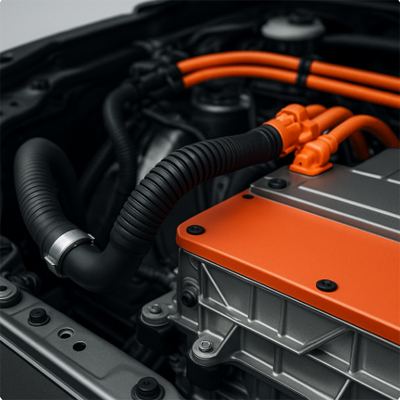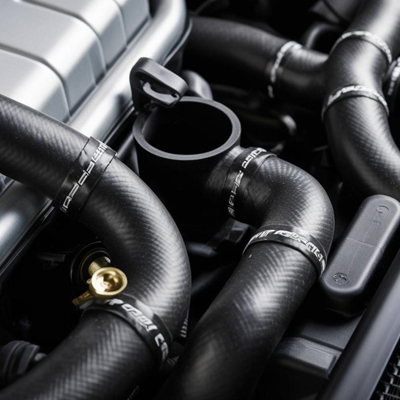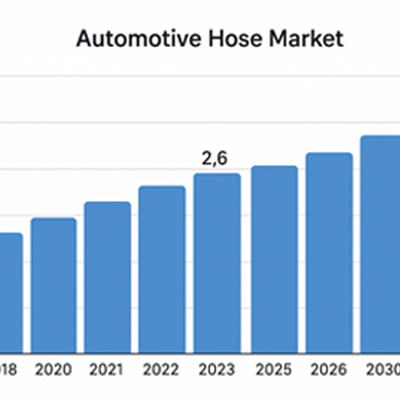Automotive Coolant Hose Market Outlook in 10 years

Industry Snapshot
With global mobility evolving rapidly, the automotive coolant hose market is gaining momentum. These hoses are essential for keeping engines at ideal operating temperatures by circulating coolant and preventing overheating. As electric vehicles (EVs), hybrid systems, and advanced internal combustion engines (ICEs) reshape the automotive landscape, there is a growing demand for more durable, efficient, and sustainable cooling solutions.
According to industry research, this market is projected to grow at a CAGR of about 6% from 2025 to 2031, with market value expected to rise from about USD 4 billion in 2024 to USD 6 billion by 2031.
Key Market Drivers
1. Rising Global Vehicle Production
Increased vehicle production—especially in Asia-Pacific and emerging regions—continues to drive demand for components such as coolant hoses. OEMs and aftermarket suppliers alike are scaling up to meet growing replacement and new-vehicle demands.
2. Material Innovation
Modern engines require hoses that withstand extreme temperatures and chemical exposure. Materials like EPDM (ethylene propylene diene monomer) and high-grade silicone are replacing traditional rubber, offering greater durability and environmental resistance.
3. Smart Cooling Technologies
Innovations are reshaping how vehicles manage heat. Some next-gen hoses are embedded with sensors that track real-time data on pressure and temperature—supporting predictive maintenance and improving engine efficiency.
4. Push Toward Sustainability
Environmental standards are prompting manufacturers to adopt eco-friendly production practices. There’s an industry-wide move to develop hoses using recyclable and low-impact materials, supporting the global shift to greener mobility.
Material Overview
Rubber Hoses: Affordable but increasingly replaced due to lower thermal resistance.
Silicone Hoses: Preferred in heavy-duty and performance applications due to heat resistance.
EPDM Hoses: Gaining popularity for their long life, flexibility, and chemical resistance.
Vehicle Applications
Passenger Cars: Largest market segment with increasing personal vehicle ownership.
Commercial Vehicles: Require rugged, high-endurance hoses for continuous operation.
Electric Vehicles (EVs): New growth driver—EVs depend on specialized thermal management for batteries and electronics.
Distribution Channels
OEM (Original Equipment Manufacturer): Continues to lead by delivering directly to car manufacturers.
Aftermarket Sales: Growing steadily, fueled by routine maintenance and replacements.
Regional Trends
Asia-Pacific: Dominates production and demand, with China, India, and Japan at the forefront.
North America & Europe: Focused on EV transition and material innovation, driving demand for advanced hose technologies.
Latin America & Middle East: Emerging growth areas due to expanding auto sectors and infrastructure development.
Opportunities & Industry Challenges
Rising raw material costs and the shift to electric drivetrains are key industry challenges. However, these transitions create opportunities for R&D in smart and sustainable coolant systems. Manufacturers offering innovative, high-performance, and eco-conscious hoses are likely to lead future market developments.
Conclusion
The automotive coolant hose market is evolving alongside a transforming automotive world. From traditional combustion engines to cutting-edge EVs, thermal management remains a critical component. Businesses that invest in material science, digital innovation, and sustainable production will be well-positioned for long-term growth.
Source: This article incorporates insights based on publicly available market research, including content from We Market Research via LinkedIn.
All content has been independently rewritten and reorganized for publication.
 Automotive Coolant Hose Market
Automotive Coolant Hose Market
 DuPont Launches eCool Technolo
DuPont Launches eCool Technolo
 Radiator Hose: Functions, Type
Radiator Hose: Functions, Type
 Global Automotive Hose Market
Global Automotive Hose Market




